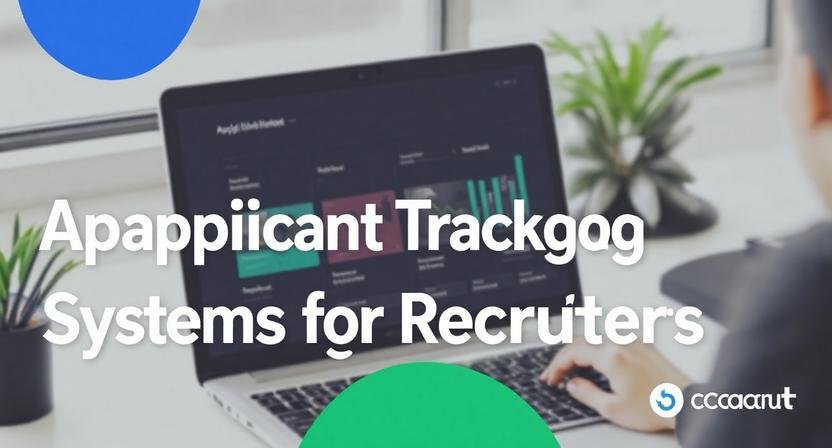Recruitment is a critical function for any organization aiming to secure the best talent in a competitive marketplace. For recruiters, managing multiple candidates, interviews, and job postings manually can be overwhelming and prone to errors. Enter applicant tracking systems for recruiters—a vital piece of software designed to streamline the hiring process, enhance productivity, and improve candidate experience.
This comprehensive guide explores what applicant tracking systems are, why recruiters should use them, key features to look for, and the best applicant tracking software for recruiters in 2025. Whether you’re a recruitment veteran or a growing agency, this article will equip you with everything you need to optimize your hiring workflow.
What is an Applicant Tracking System for Recruiters?
An applicant tracking system (ATS) is a software platform that automates and manages the recruitment process. It serves as a centralized database where recruiters can post job openings, collect and organize applications, screen resumes, schedule interviews, and communicate with candidates—all in one place. Unlike manual methods, an ATS helps reduce administrative burden and increases hiring efficiency.
For recruiters, an applicant tracking system offers tools specifically tailored for managing large candidate volumes, collaborating with hiring managers, and maintaining compliance with employment laws. The software uses keyword matching, AI-driven candidate ranking, and analytics to improve decision-making.
Why Applicant Tracking Software for Recruiters is Essential in 2025
The recruitment landscape has changed drastically with more job seekers applying online and higher expectations for speedy hiring processes. Here’s why applicant tracking software for recruiters is essential:
-
Time Savings: Automate repetitive tasks such as resume screening and interview scheduling to focus on relationship-building.
-
Improved Candidate Quality: Use AI-powered tools to rank candidates based on skills and job fit.
-
Collaboration: Centralize communication and feedback from hiring teams to make hiring decisions faster and more aligned.
-
Compliance: Maintain legal compliance by standardizing hiring workflows and securely managing candidate data.
Key Features to Look For in Applicant Tracking Systems for Recruiters
When selecting an applicant tracking system for recruiters, look for these critical features:
-
Resume Parsing & Keyword Search: Quickly parse resumes and identify top candidates by matching job-specific keywords.
-
Multi-Channel Job Posting: Seamlessly post to multiple job boards and social media channels.
-
Custom Workflows: Ability to tailor hiring pipelines and recruitment stages to your organization’s needs.
-
Interview & Calendar Integration: Schedule interviews and sync with personal/team calendars.
-
Collaboration Tools: Share candidate profiles and collect interview feedback efficiently.
-
Analytics & Reporting: Track KPIs such as time-to-hire, candidate source efficacy, and diversity metrics.
-
Mobile Accessibility: Manage recruitment on the go with mobile-friendly platforms.
-
Candidate Experience Portal: Provide applicants with status updates and engagement options throughout the process.
Best Applicant Tracking Systems for Recruiters in 2025
Here are some of the best applicant tracking systems for recruiters to consider this year:
-
Greenhouse: Known for intuitive workflows, powerful reporting, and seamless integrations.
-
Lever: Combines ATS and candidate relationship management (CRM) for proactive sourcing.
-
BambooHR: Offers ATS alongside human resource management features tailored for SMBs.
-
SmartRecruiters: Enterprise-grade platform with recruitment marketing and global sourcing capabilities.
-
Zoho Recruit: Affordable, scalable, and packed with automation features for small and mid-sized teams.
How Application for Recruitment is Simplified by ATS
The application for recruitment process is streamlined significantly with modern ATS platforms. Candidates benefit from easy-to-use, mobile-friendly online applications, while recruiters receive standardized candidate data to accelerate screening. Automation minimizes manual errors and provides real-time tracking of application status, improving transparency and candidate engagement.
How to Maximize ROI with an Applicant Tracking System
To ensure your chosen ATS delivers maximum return on investment:
-
Train Your Team Thoroughly: Ensure all users understand the system’s full capabilities.
-
Leverage Analytics: Use data insights to refine recruitment strategies and reduce costly hiring mistakes.
-
Integrate Seamlessly: Connect the ATS with payroll, HRIS, and other internal platforms.
-
Promote Candidate Engagement: Utilize communication tools to keep applicants informed and interested.
Read More: How to Choose the Right Applicant Tracking System for Recruiters
Authoritative Resource for Deeper Insights
For more detailed information on applicant tracking systems and how they shape modern recruitment, visit the Oracle overview on applicant tracking systems: What Is an Applicant Tracking System? – Oracle.
By adopting the right applicant tracking system for recruiters, hiring teams can transform their recruitment process into a streamlined, data-driven, and candidate-centered function—ready to meet the challenges of 2025 and beyond.

